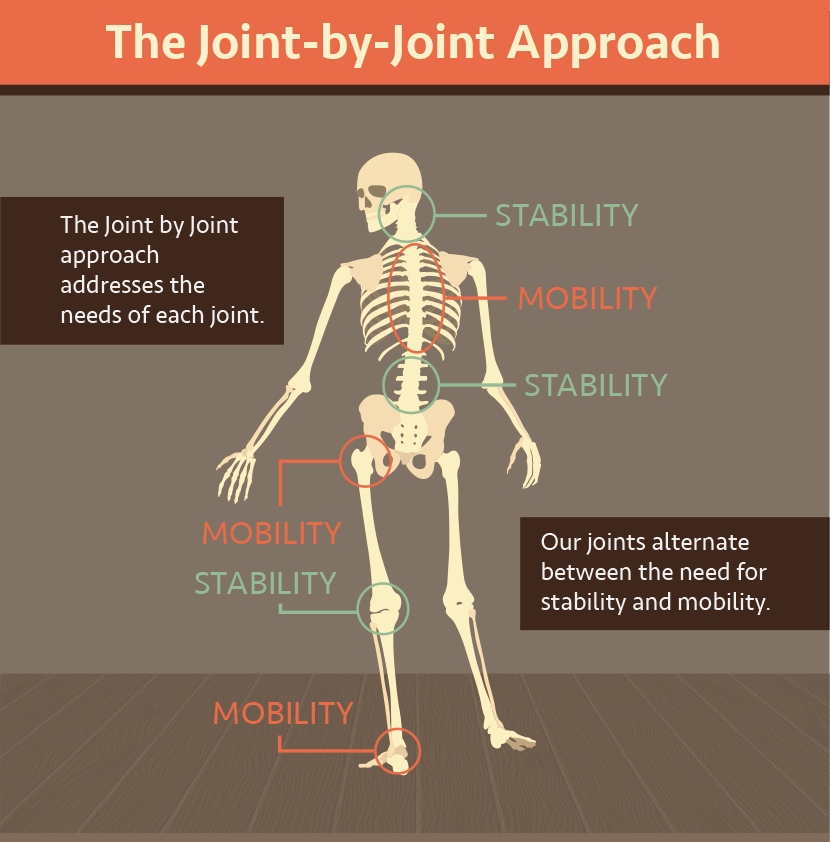- Flexibility: enables you to reach the end ranges of motion of some movements, it doesn't necessarily mean you have core strength, balance or co-ordination at these ranges to control the movement i.e. some external force is required e.g. gravity or leaning against an object.
- Mobility: the ability to perform and control movement patterns through their full range of motion.
While flexibility is important and being 'flexible' is something many people aspire to be, issues can arise from over training. As discussed previously, flexibility differs from mobility in that external assistance can be provided to reach the end position. This in turn means that at the end position the ability for the involved muscles to produce force and safely control movement can be greatly reduced. Training flexibility through prolonged stretching (and ignoring mobility) only provides a temporary increase in muscle length that will quickly revert to its previous state. Forcing a stretch using external input, without building mobility and muscular control around the joints, will not produce a lasting increase in range of motion, while also can be a risk factor for injury occurrence.
So if you've been stretching your hamstrings religiously for months without any improvement, flexibility is not your issue, mobility is what you should be focusing on.
As we now know, being mobile requires total control as you take your joints and tissues through a series of movements at their full range of motion.
Improving mobility will in turn lead to improved flexibility. But this cannot be achieved through static stretching alone, instead motion is required, in a slow and controlled manner.
e.g. if you have poor ankle mobility, you will only be able to stretch the muscles around the ankle to match the joints current range of motion, which tells us that stretching will not fix the problem.
Your ability to actively move a joint through a range of motion is not only dictated by the mobility at the joint but by your central nervous system. If your central nervous system does not feel strong through a certain range of motion it is going to show by limiting that range of motion.
A combination of mobility and muscle activation drills paired with stretching is what is required to prepare your body for any challenge.
So if you feel stiff, have restricted movement or soreness, then focus on mobility drills, not just for that specific joint, but also those surrounding it. Not only can limitations within each joint affect how that joint functions, but also how joints above and below work as well. Poor hip mobility can cause low back pain or knee dysfunction. Lack of ankle mobility can cause knee pain. When a mobile joint becomes immobile (like the ankle) it can cause a stable joint to become unstable (like the knee).
Gray Cook, physical therapist and author of Movement: Functional Movement Systems: Screening, Assessment, and Corrective Strategies

Mobility Drills: (Check out Instagram https://www.instagram.com/gripjoshpt/ for demo's of these)
Hip:
- 90/90 sitting switch
- 90/90 internal rot holds
- 90/90 external rot holds
- Froggers
- Squat to good morning
- 90/90 sitting switch
- 90/90 internal rot holds
- 90/90 external rot holds
- Froggers
- Squat to good morning
Shoulder
- Band dislocates
- German hangs (advanced)
- Band pull apart
- Band external rotations
- Band dislocates
- German hangs (advanced)
- Band pull apart
- Band external rotations
Back
- Thoracic extensions using foam roller
- Thoracic extensions on a ball
- Quadruped thoracic rotations
- Elbow sinks on chair
- Thoracic extensions using foam roller
- Thoracic extensions on a ball
- Quadruped thoracic rotations
- Elbow sinks on chair
Wrist
- Combination of flexion & extension moves
Ankle
- KB dorsiflexions contract & relax
- Band rock back & forth
- Massage ball in anterior aspect of ankle
- Deep Squat
- Combination of flexion & extension moves
Ankle
- KB dorsiflexions contract & relax
- Band rock back & forth
- Massage ball in anterior aspect of ankle
- Deep Squat
Comments
Post a Comment